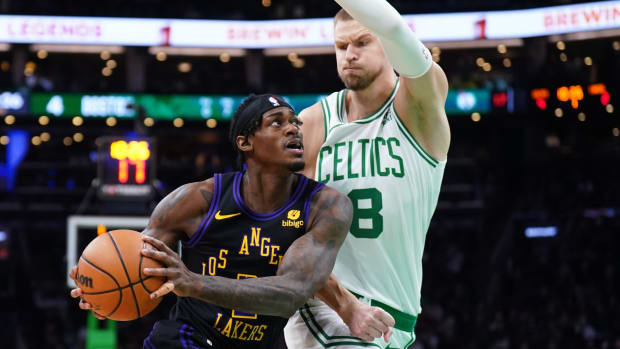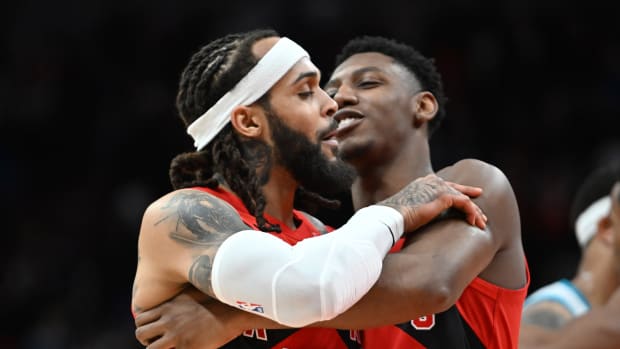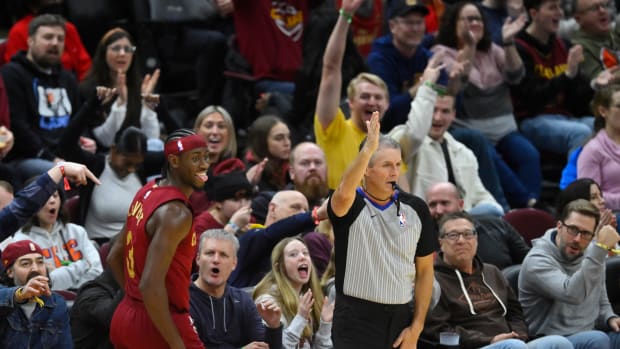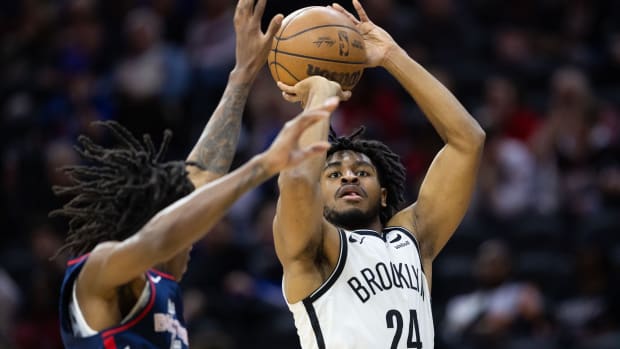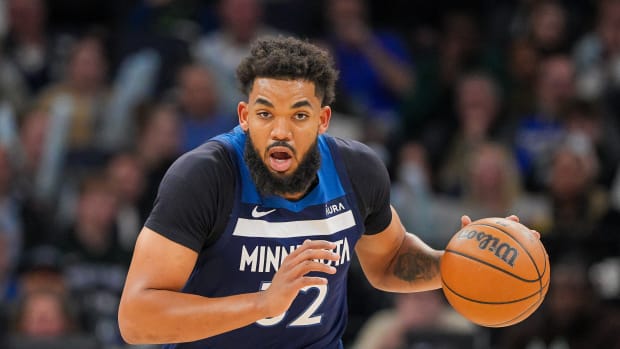Trust the (Draft) Process: Inside NBA Prospect Workouts
The Crossover presents a series of entries from former player agent, Matt Babcock. Over the remaining weeks leading up to the 2018 NBA Draft, he will provide a unique look behind the scenes of the draft process—offering a glimpse at how agents advise their players and maneuver the pre-draft landscape. Babcock’s fourth post details how agents approach the NBA raft team workouts, from deciding which teams to workout for and navigating the hectic travel itineraries in the process.
It is crunch time! There are two weeks until the NBA draft and team workouts are in full force. This phase must go well in order to seal the deal and make a player’s dream a reality.
First of all, this part of the process can look very different for each player. Generally, the higher a player is projected to be drafted, the narrower his draft range. This naturally leads to the highest-rated players doing very few team workouts. Draft hopefuls like Theo Pinson from North Carolina or George King from Colorado are hoping to get drafted. Both are viable options as second-round picks, but there are no guarantees their names will be called come draft night. If either of these players were to go undrafted, theoretically, all 30 teams could be options to sign them as free agents. Therefore, their agents have a lot of work to do in order to map out efficient schedules for their players to cover as much ground as possible, scheduling workouts with as many teams as possible.
All of these workouts will be against other draft prospects, competing for the same spot. The intensity of these workouts is similar to a battlefield with players often taking a “do or die” approach. On the other hand, a player like Deandre Ayton from Arizona, who is widely regarded as the favorite to be the No. 1 pick this year, will likely only workout for one or two teams: Phoenix and Sacramento. And I would not be surprised to see him only workout for Phoenix—this workout would be without any other players included, meaning zero competitive play. Clearly, there's a very different process for Ayton than for most of the other draft hopefuls.
The pressure these young kids endure during this time is extremely high. The interrogation-like interviews, combat-like workouts, and demanding travel, combined with the uncertainty of their futures, makes for a physically and mentally draining roller coaster leading up to the draft.
The day-to-day responsibilities for an agent during this time are similar to those of a stockbroker on Wall Street: There are a million moving parts and the phone is ringing off the hook. In a perfect world, an agent would be able to organize a workout schedule for his player for the remainder of the pre-draft process fairly easily. In reality, this is not the case. Not even close. The whole thing is just disorganized. The goal is to give as much order to this chaos as possible.
At times, an agent will find himself feeling like a chicken with its head cut off. And keep in mind all of this is done while fielding calls from the player, his parents, his “handler,” his coach or whoever might be in the player’s “inner circle”. Everyone is nervous and everyone wants updates. Executing what is necessary to help a player maximize his opportunities while managing everyone’s expectations is just plain tough at times. The irony is that in most cases, the higher rated the player, the simpler the job for the agent.
At this point, mutual interest has been established with all of the appropriate teams. What happens now? An agent will need to make some follow-up calls but his main priority is to be available to the teams requesting specific workout dates. If a player has a wide draft range this will be a lot to manage.
When I was an agent, a typical day following the combine would look something like this:
My phone rings—it’s, say, the Manager of Player Personnel for the Denver Nuggets.
Manager (Nuggets): Is your player available the day after tomorrow, Friday, May 25th?
Me: Yes, he is. May I ask who else is in the workout?
Manager (Nuggets): Players X, Y and Z will be in the workout.
Me: That works for us.
Manager (Nuggets): Someone from our office will be reaching out to coordinate travel.
I receive another call. It’s the Director of Basketball Operations for the Philadelphia 76ers.
Director (76ers): We’d like to have your player come in for a visit. We are putting together a workout for Friday, May 25th. Is he available?
Me: We just committed to another team for that day. Do any other days work?
Director (76ers): I think we can do Monday, May 28th. I’m still trying to get a commitment from another player so that we can have a full workout with six players. Would that work?
Me: Yes, that day works for us.
Director (76ers): Pencil it in and I’ll text you later today to confirm.
My phone rings again. It’s the Director of Player Personnel for the Brooklyn Nets.
Director (Nets): Is your player available for a workout on Tuesday, May 29th?
Me: Yes. It will be back-to-back workouts for him but he will be coming from Philadelphia so it should be easy travel.
I put my phone down and see that I have a new text message. It’s from the Director of Scouting for the Phoenix Suns.
Director (Suns): Is your player available Wednesday, May 30th?
Me: That day won’t work. He has three workouts this week. He would be coming off back-to-back workouts and he would be traveling from Brooklyn. Travel would be tough. Do any other days work?
Director (Suns): We don’t have any other workouts set up next week. Our GM and our Assistant GM will be going to the EuroCamp in Treviso, Italy, June 2-5. I don’t think we will do anything until they get back. Let’s keep in touch and hopefully we can arrange a workout sometime soon.
I put my phone down again. I have an email from the Director of Team Operations for the Denver Nuggets.
Subject: Workout 5/25
Good Morning Matt,
Please send me the following info for your player ASAP.
FULL NAME:
DATE OF BIRTH:
CELL:
EMAIL:
5/24: Where is he coming from? Please specify if it’s a workout.
5/25: Where is he going? Please specify if it’s a workout.
Thank you!
Stay or Go: An Agent’s Perspective on NBA Draft Early Entry Decisions
The itineraries mentioned will generally include information for the following: flights, ground transportation, hotels, and a detailed schedule of the entire trip. Teams can have a player visit up to two times; the first trip for a maximum of 48 hours, the second for a maximum of 24 hours. All travel expenses are covered by the teams. Although, every team employs slightly different travel arrangements. Most flights for the players are economy class but sometimes teams will provide first-class tickets for highly-rated players or big men. Most teams will have a car service or a staff member pickup and dropoff the player at the airport.
A side story relative to this: In 2003, while I was in college, I informally volunteered during the pre-draft period with my dad’s team, the Milwaukee Bucks. I served as a passer and rebounder in the workouts and I picked up and dropped off players at the airport. My most interesting pickup, and perhaps the most interesting pickup in NBA history: 7’5” Pavel Podkolzin and 7’6” Slavko Vranes—at the same time! Needless to say, this was quite a spectacle walking through baggage claim and getting into my car.
Most teams will have players stay at a four-star hotel: Hyatt, Marriott, Westin, etc. But again, every team is different. Some teams will have players stay at a five-star hotel while others will have players stay at a three-star hotel due to the proximity to their practice facility. Typically a team’s front office staff will take players to dinner the night before a workout or an early breakfast the morning of the workout. If not, teams will give per diem or a certain amount of credit for room service at the hotel. Everything is a test during this time; players need to be prepared for anything. A player does not want to give an impression of being a prima donna. He needs to go with the flow. The player’s goal is to play in the NBA and all of these teams have their golden ticket.
Generally, a team workout day will look something like this:
• On-Court Workout: Teams can have a maximum of six NBA draft prospects on the floor at a time. Players will be put through drills to show their skills. Ball handling, shooting, and offensive footwork are usually the main points of interest. This will also include competitive play: 1-on-1, 2-on-2, and 3-on-3.
• Psychological Testing: A lengthy multiple choice test. This test is to examine a player’s intelligence and personality.
• Interviews: This could be with the general manager, the head coach, or others in the front office and/or coaching staff. Occasionally, a team psychologist will be included in these interviews, as well.
• Athletic Testing and Measurements
• Medical Testing
Follow-up calls will need to be made to each team in order to gather feedback following the workout and visit. A lot of times bolder statements will start being made by teams, one way or another. If a team has significant interest, they will likely begin probing the agent about his expectations for the player’s draft range. There are rumors swirling and everyone is posturing during this time. An agent and his player must stay focused and finish strong. The journey’s end is in sight.































